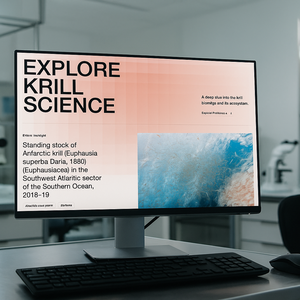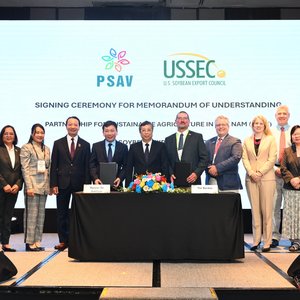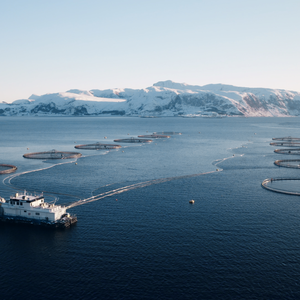Japanese Aquaculture Farmers in Search of Alternative Meal Turn to U.S. DDGS
In collaboration with the Japanese aquaculture industry, the U.S. Grains Council is conducting a U.S. DDGS feed trial with rainbow trout at a commercial aquaculture farm.
Japan receives much of its fish meal from Chile, the world’s main supplier. However, the earthquake earlier this year, Chile still struggles to recover from the damage to its productivity, resulting in higher global fish meal prices.
“The Japanese fish producers have been troubled with a rapidly increasing cost for fish meal,” said Hiroko Sakashita, USGC associate director in Tokyo.
Sakashita explains that the higher cost of fish meal in Japan, as compared to the cost in other countries, is also attributed to the use of several additives in the Japanese fish meal. Another reason is a surging demand in Asia and a simultaneous deficit in supply.
“The increasing cost of fish meal is currently a global concern and there are growing worries about a tight supply in the future,” Sakashita said.
Japan is already a steadily growing market for U.S. DDGS, importing 250,000 metric tons in 2009. The Council has had great success with the ethanol co-product in Japan in its dairy, swine, and poultry industries, and it seems fitting to expand the already imported product to its aquaculture sector.
The Council’s feed trial aims to support the research conducted by the Aichi Trout Farmers Cooperative Association and to find a less expensive alternative for replacing the expensive fish meal. The feed trial uses high-protein U.S. DDGS, which is much less expensive than fish meal. A local Japanese fish farm has set up four indoor water tanks of rainbow trout, and is feeding them with four different compound feeds for three months. The feed used for the experiment includes high protein DDGS, with 20 percent of the total feed partially replacing fish meal and soybean meal.
A successful demonstration of the trial would show the feed efficiency of high protein DDGS for fish as an alternative protein source and is expected to increase the demand of U.S. DDGS for the Japanese fish feed market, which is larger than 500,000 metric tons in total.










